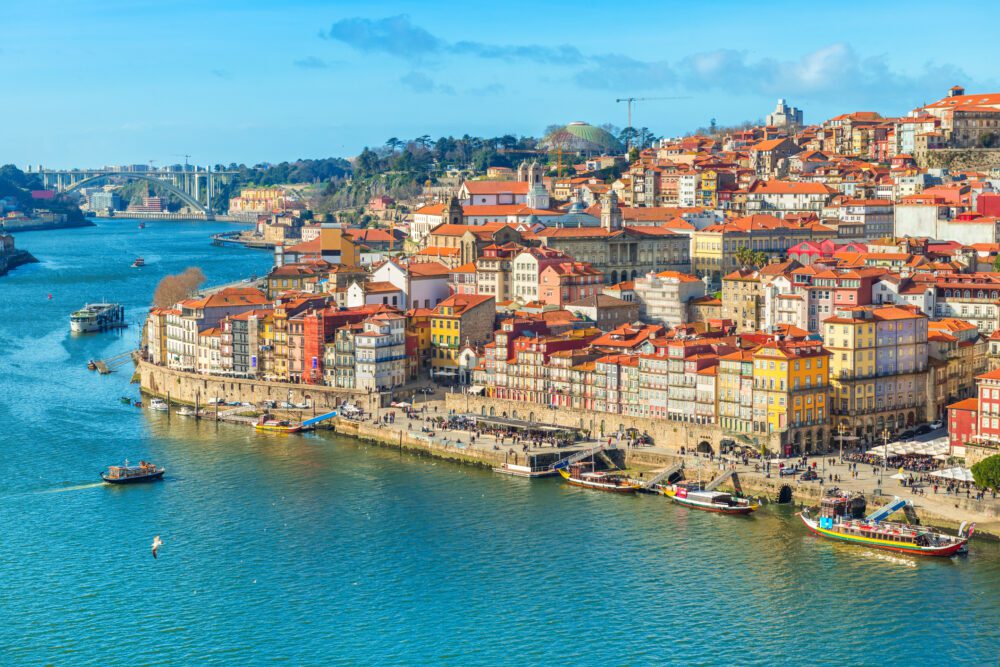
Introduction
Nestled along the scenic banks of the Douro River, Porto stands as a captivating city steeped in history and culture. As one of Portugal’s oldest cities, Porto boasts a rich tapestry of architectural wonders, charming neighbourhoods, and a vibrant culinary scene. Its historic centre, a UNESCO World Heritage Site, is a maze of narrow streets adorned with colourful buildings, picturesque churches, and bustling markets, offering visitors a glimpse into the city’s storied past. Porto’s unique blend of medieval charm and modern sophistication makes it a dynamic destination that appeals to travellers of all interests.
Dating back to Roman times, Porto has a fascinating history that has shaped its character and identity over the centuries. As a major port city, Porto played a pivotal role in Portugal’s maritime history, serving as a hub for trade and commerce. Today, remnants of its maritime heritage can be seen in its historic port wine cellars, where visitors can sample the city’s famous fortified wine. With its vibrant arts scene, lively nightlife, and breathtaking riverfront views, Porto offers a wealth of experiences just waiting to be discovered, making it an exciting destination for travellers seeking to explore the heart and soul of Portugal.
Table of Contents
Map of the Best Things to Do in Porto
Cais da Ribeira
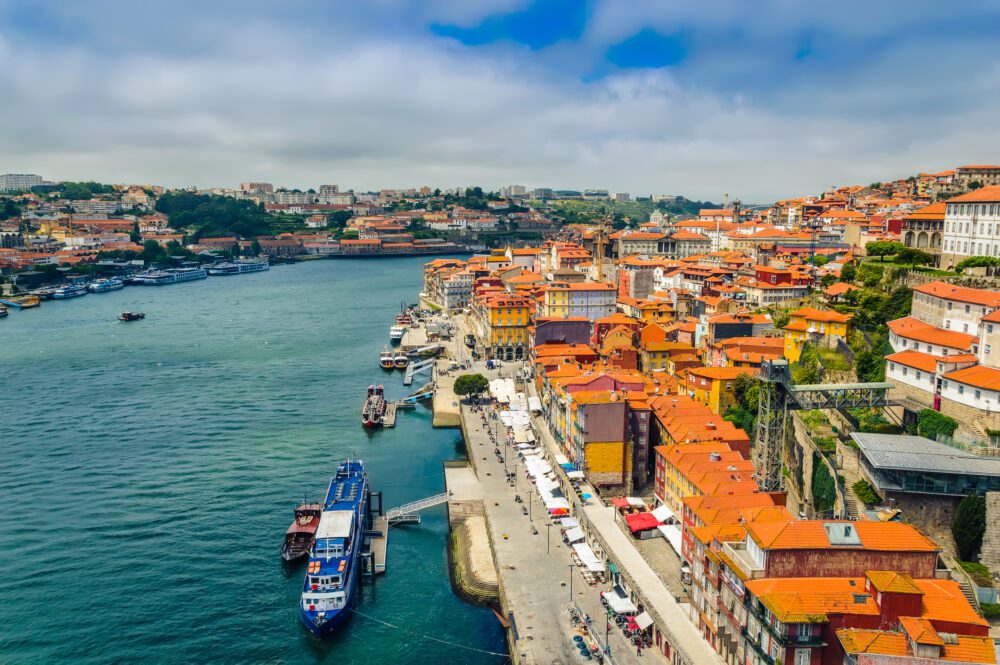
Cais da Ribeira, situated along the picturesque banks of the Douro River in Porto’s historic Ribeira district, is a charming waterfront promenade brimming with history and ambience. Dating back to medieval times, this atmospheric area was once a bustling hub of maritime activity, where fishermen, traders, and sailors converged to ply their trade. Today, Cais da Ribeira retains much of its old-world charm, with its narrow cobblestone streets, colourful buildings adorned with laundry hanging from balconies, and lively cafes and restaurants serving up traditional Portuguese cuisine. Strolling along the waterfront promenade, visitors can soak in the enchanting atmosphere, with views of the iconic Dom Luís I Bridge towering overhead and the bustling activity of boats ferrying passengers across the river.
For those looking to explore Cais da Ribeira to its fullest, consider taking a leisurely boat cruise along the Douro River, offering panoramic views of Porto’s skyline and the historic Ribeira district from the water. Alternatively, indulge in a meal or drink at one of the waterfront restaurants or cafes, where you can savour delicious local specialities such as bacalhau (salted cod), grilled sardines, and port wine while soaking in the vibrant atmosphere. Don’t forget to wander the maze-like streets of the Ribeira district, where you’ll find charming shops selling artisanal goods, quaint squares, and hidden gems waiting to be discovered.
Dom Luís I Bridge

The Dom Luís I Bridge stands as one of Porto’s most iconic landmarks, spanning the Douro River and connecting the bustling Ribeira district with the vibrant Vila Nova de Gaia neighbourhood. Designed by the renowned Belgian engineer Théophile Seyrig, who was a disciple of Gustave Eiffel, the bridge was completed in 1886 and was hailed as an engineering marvel of its time. The bridge features two levels, with the upper deck carrying road traffic and the lower deck accommodating pedestrians and the metro line. Its distinctive double-deck arch design and wrought iron lattice structure offer breathtaking views of the river and the historic cityscape, making it a favourite spot for photographers and sightseers alike.
For visitors looking to experience the Dom Luís I Bridge up close, crossing the pedestrian walkway on the lower deck is a must-do activity. From this vantage point, you can enjoy panoramic views of the Douro River, the colourful riverside buildings of Porto and Vila Nova de Gaia, and the imposing hills that surround the city. Additionally, consider taking a leisurely stroll along the bridge’s upper deck or enjoying a scenic river cruise beneath its arches for a unique perspective of Porto’s skyline. Photographers will find plenty of opportunities to capture stunning images of the bridge, especially during sunset when the golden hues bathe the city in a warm glow.
Porto Cathedral
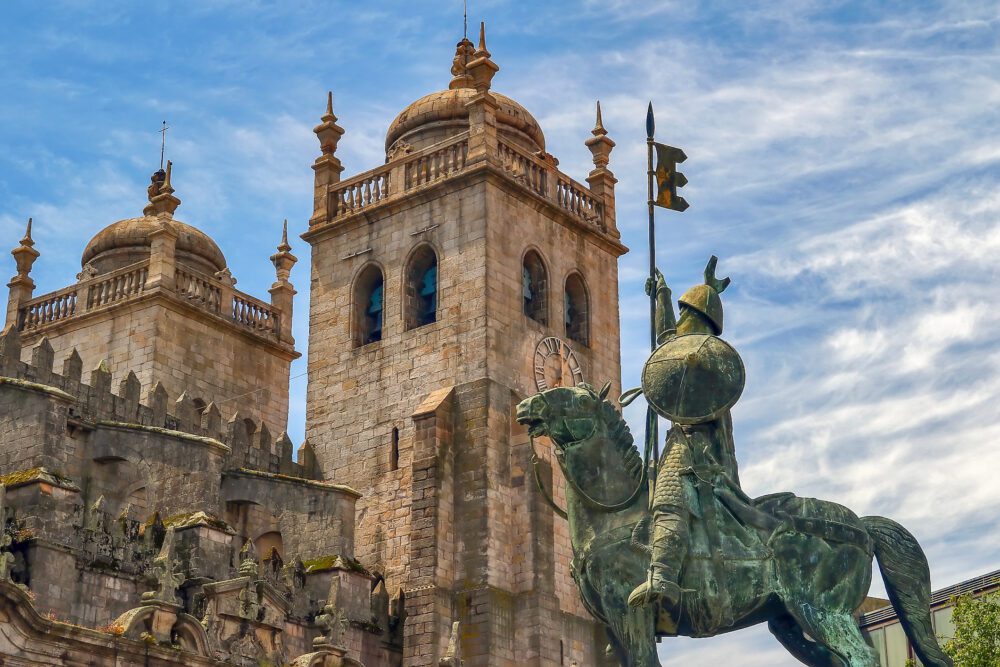
The Porto Cathedral, also known as the Sé do Porto, stands as one of the oldest and most significant religious landmarks in Porto, Portugal. Construction of this imposing Romanesque cathedral began in the 12th century and continued over several centuries, resulting in a blend of architectural styles, including Romanesque, Gothic, and Baroque elements. Situated atop a hill in the historic centre of Porto, the cathedral commands panoramic views of the city and the Douro River. Its exterior features intricate carvings, rose windows, and twin bell towers, while the interior is adorned with ornate altars, chapels, and religious artwork. Visitors can explore the cathedral’s cloisters, which are adorned with azulejos (traditional Portuguese tiles), and climb the Torre dos Clérigos for breathtaking vistas of Porto’s skyline.
When visiting the Porto Cathedral, it’s advisable to dress modestly, as it is a place of worship. Admission to the cathedral is free, although there may be a charge to visit certain areas, such as the cloisters or the tower. Guided tours are available for those who wish to learn more about the cathedral’s history and architecture. Additionally, visitors should take some time to explore the surrounding neighbourhood, which is filled with charming streets, traditional taverns, and historic buildings. The Porto Cathedral is a must-visit destination for anyone interested in history, architecture, or religious heritage, offering a glimpse into Porto’s rich cultural heritage and providing stunning views of the cityscape.
Bolsa Palace
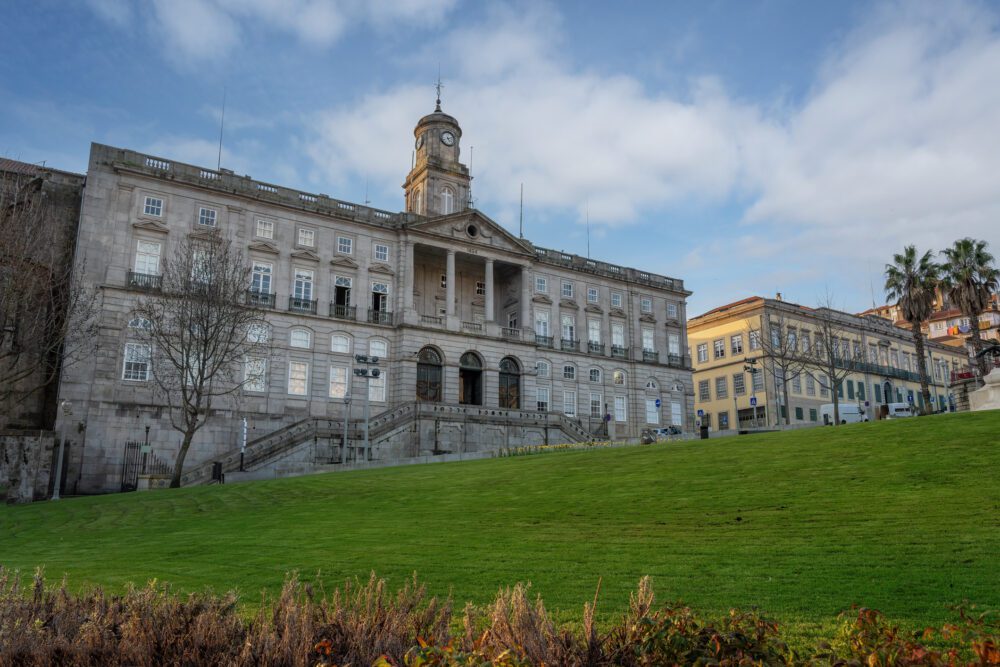
Bolsa Palace, also known as Palácio da Bolsa, is a magnificent neoclassical building located in the heart of Porto’s historic centre. Constructed in the 19th century, it served as the stock exchange and commercial hub of Porto. The palace is renowned for its stunning architecture, blending neoclassical and baroque styles, adorned with intricate carvings, grand staircases, and ornate halls. The highlight of Bolsa Palace is undoubtedly the Arab Room, a lavishly decorated Moorish-inspired hall with a stunning gold-plated dome. Visitors can also explore other rooms and halls adorned with beautiful frescoes, sculptures, and furniture, offering insight into Porto’s rich history and cultural heritage.
Practical tips for visiting Bolsa Palace include purchasing tickets in advance to avoid long queues, especially during peak tourist seasons. Guided tours are available in multiple languages and provide fascinating insights into the history and significance of the palace. Photography is permitted inside the palace, allowing visitors to capture the beauty of its ornate interiors. After exploring the palace, visitors can stroll through the nearby Ribeira district, a UNESCO World Heritage site known for its picturesque streets, charming cafes, and riverside promenade. Bolsa Palace is a must-visit attraction in Porto, offering a glimpse into the city’s prosperous past and architectural splendour.
Church of São Francisco
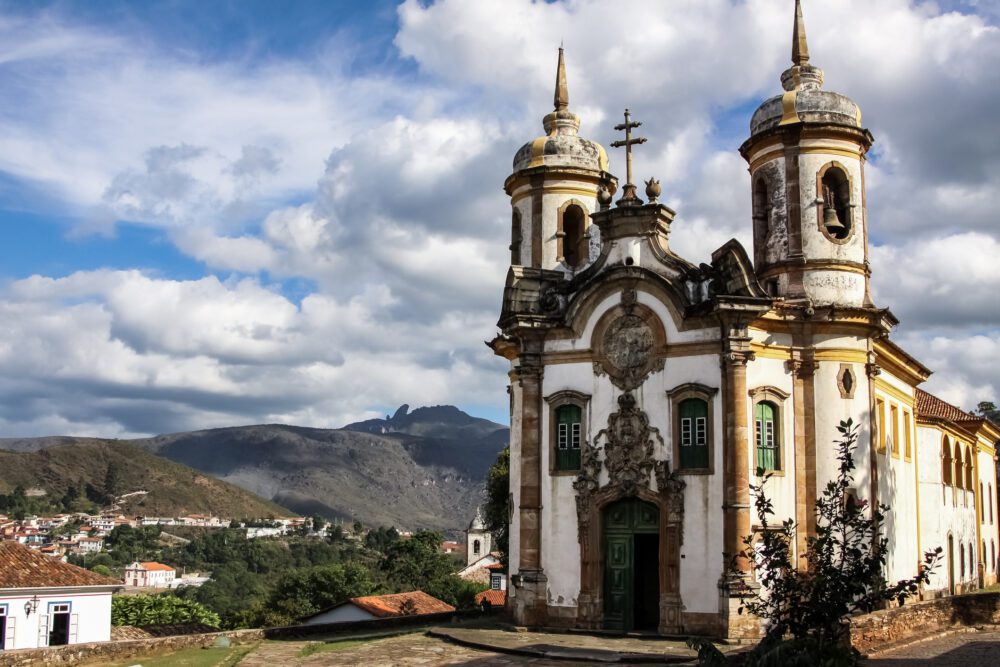
The Church of São Francisco, located in the heart of Porto’s historic center, is a captivating testament to Gothic and Baroque architecture. Dating back to the 14th century, the church has undergone several renovations and expansions over the centuries. Its unassuming exterior belies the opulent interior, which is adorned with intricate woodcarvings, gilded altars, and stunning tilework. One of the highlights of the church is the Chapel of the Kings (Capela dos Reis), a masterpiece of Baroque art featuring a ceiling adorned with intricate woodcarvings depicting scenes from the life of Saint Francis of Assisi. Another notable feature is the catacombs beneath the church, which contain the remains of prominent Porto families dating back centuries.
Practical tips for visiting the Church of São Francisco include purchasing tickets in advance to avoid long queues, particularly during peak tourist seasons. Guided tours are available for those interested in learning more about the history and significance of the church. Visitors should also be respectful of the religious nature of the site and dress modestly when entering. After exploring the church, visitors can wander through the surrounding neighbourhood of Ribeira, with its cobbled streets, colourful buildings, and lively atmosphere. The Church of São Francisco is a must-visit destination for anyone interested in Porto’s rich history and architectural heritage.
São Bento Railway Station
São Bento Railway Station, located in the heart of Porto, is not just a transportation hub but also a magnificent architectural gem. Built-in the early 20th century on the site of a former Benedictine monastery, the station is renowned for its stunning azulejo tilework, which covers the walls of the main hall. The intricate blue and white tiles depict scenes from Portuguese history, culture, and daily life, offering visitors a captivating visual narrative. Designed by artist Jorge Colaço, the tile panels took over a decade to complete and are considered one of the finest examples of azulejo art in Portugal.
Practical tips for visiting São Bento Railway Station include arriving early to avoid crowds and fully appreciating the intricate tilework without obstruction. While the station is still an active transportation hub, visitors are free to explore the main hall and admire the tile panels at their leisure. Guided tours are available for those interested in learning more about the history and significance of the station and its artwork. Additionally, visitors should take a moment to appreciate the architectural details of the station, including its grand arched windows, ornate ironwork, and vaulted ceilings. São Bento Railway Station is not only a transportation hub but also a cultural and historical landmark that should not be missed when exploring Porto.
Clérigos Tower
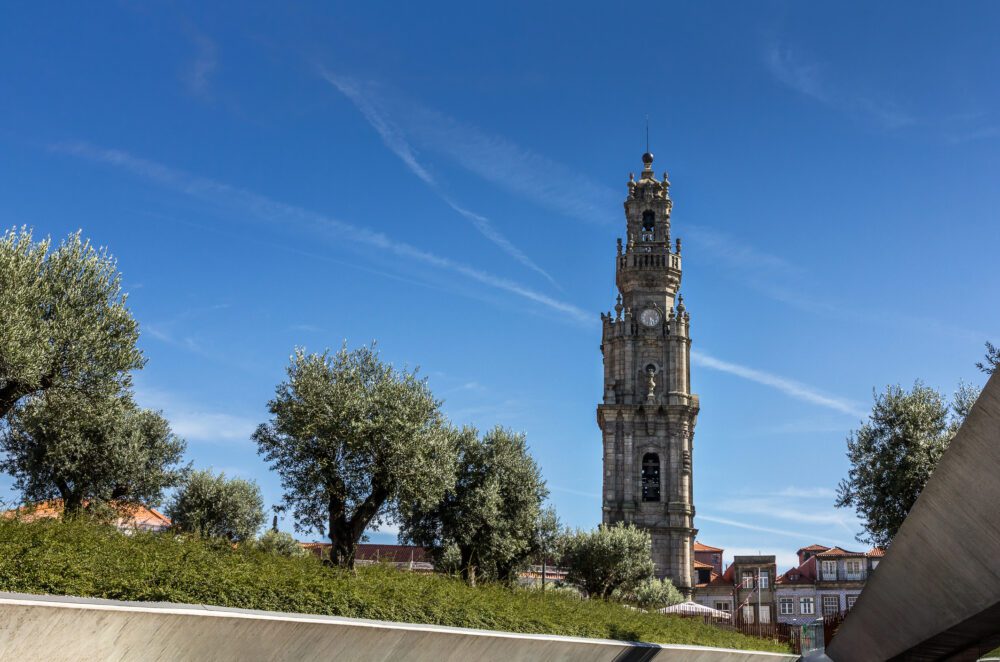
The Clérigos Tower stands tall as one of Porto’s most iconic landmarks, offering panoramic views of the city and the Douro River. Built between 1754 and 1763 by renowned architect Nicolau Nasoni, the tower is part of the Clérigos Church complex and is known for its distinctive Baroque architectural style. Rising to a height of 76 meters (249 feet), the tower features a spiral staircase with 225 steps leading to the top, where visitors can enjoy breathtaking vistas of Porto’s historic centre. Originally constructed to serve as a bell tower for the adjacent church, the Clérigos Tower has become a symbol of Porto and an essential stop for visitors exploring the city.
Practical tips for visiting the Clérigos Tower include purchasing tickets in advance to avoid long queues, especially during peak tourist seasons. Visitors should also be prepared for the climb to the top, as the staircase can be narrow and steep in some sections. However, the effort is well worth it for the stunning views awaiting at the summit. Additionally, combining a visit to the Clérigos Tower with a tour of the Clérigos Church and its adjacent museum provides a comprehensive experience of Porto’s religious and architectural heritage.
Bolhão Market
Bolhão Market, located in the heart of Porto, is a vibrant and historic marketplace that has been a cornerstone of the city’s culinary and cultural scene for over a century. Established in 1914, the market is housed in a neoclassical building adorned with intricate tilework and ironwork, adding to its charm and character. Inside, visitors will find a bustling atmosphere filled with colourful stalls selling fresh produce, seafood, meat, cheeses, and a variety of local delicacies. The market’s lively ambience and authentic Portuguese flavours make it a must-visit destination for food enthusiasts and travellers eager to immerse themselves in Porto’s gastronomic culture.
Practical tips for visiting Bolhão Market include arriving early in the day to experience the market at its liveliest and to have the best selection of fresh products. Navigating the market’s maze-like layout can be a delightful adventure, but it’s helpful to wear comfortable shoes and be prepared to explore every nook and cranny. Engaging with the friendly vendors and sampling some of their offerings is highly recommended, as it provides an authentic taste of Porto’s culinary heritage. Additionally, visitors should take some time to admire the market’s beautiful architecture and intricate details, which offer insights into its rich history and cultural significance.
Livraria Lello
Livraria Lello, often referred to as one of the most beautiful bookstores in the world, is a beloved landmark in Porto that attracts bibliophiles and architecture enthusiasts from around the globe. Founded in 1906, the bookstore is renowned for its stunning neo-Gothic façade, intricate woodwork, and iconic red staircase. Designed by the architect Xavier Esteves, Livraria Lello’s interior is a masterpiece of Art Nouveau and Art Deco styles, featuring ornate carvings, stained glass windows, and a mesmerizing ceiling adorned with intricate motifs. Its historical significance and architectural beauty have earned it a spot on Porto’s cultural heritage list and have made it a must-visit destination for anyone exploring the city.
Practical tips for visiting Livraria Lello include purchasing tickets in advance to avoid long lines, as the bookstore is a popular tourist attraction. It’s also recommended to visit during the early morning or late afternoon to experience the bookstore with fewer crowds and ample time to browse its vast collection of books. While photography is allowed, visitors are asked to be respectful of others and refrain from using flash photography inside the store. Additionally, taking a moment to appreciate the bookstore’s unique ambience and immersing oneself in its literary atmosphere is highly recommended.
Crystal Palace Gardens
The Crystal Palace Gardens in Porto offer a serene escape from the bustling city streets, inviting visitors to immerse themselves in lush greenery and captivating views. Originally built in the 19th century as part of the Crystal Palace complex, these gardens were designed to showcase the grandeur of the Crystal Palace itself, which unfortunately no longer stands. However, the gardens have retained their charm and beauty, featuring meticulously landscaped lawns, vibrant flower beds, and towering trees that provide shade and tranquillity. With winding pathways and ornate fountains scattered throughout, the gardens offer plenty of opportunities for leisurely strolls and peaceful contemplation.
Practical tips for exploring the Crystal Palace Gardens include wearing comfortable walking shoes, as the terrain can be uneven in some areas. Visitors can also bring a picnic and enjoy a relaxing afternoon amidst nature, taking advantage of the numerous benches and picnic areas available. Additionally, the gardens often host cultural events and exhibitions, so it’s worth checking the schedule in advance to see if any special events are taking place during your visit.
Casa da Música
Casa da Música stands as an architectural masterpiece and a cultural landmark in Porto, offering a vibrant hub for music enthusiasts and architectural aficionados alike. Designed by the renowned Dutch architect Rem Koolhaas, this striking concert hall opened its doors in 2005 as part of Porto’s designation as the European Capital of Culture. Its bold and innovative design features a distinctive angular exterior covered in white tiles, which shimmer in the sunlight, creating a dynamic interplay with the surrounding urban landscape. Inside, visitors are greeted by a stunning array of concert halls, rehearsal rooms, and multimedia spaces, all meticulously designed to provide optimal acoustics and immersive musical experiences. Casa da Música hosts a diverse program of concerts, performances, and cultural events throughout the year, showcasing a wide range of musical genres, from classical to contemporary.
Practical tips for visiting Casa da Música include checking the event schedule in advance to book tickets for performances or guided tours, as this iconic venue is a popular destination for both locals and tourists. Guided tours offer insight into the architectural design and acoustic engineering behind this modern marvel, providing visitors with a deeper appreciation for its cultural significance. Additionally, visitors can explore the surrounding area, which features restaurants, cafes, and shops, making it an ideal spot to unwind and soak in the vibrant atmosphere of Porto’s music scene.
Serralves Park
Serralves Park, located in Porto, Portugal, is a sprawling oasis of natural beauty and cultural significance. Established in the 1930s by the Second Count of Vizela, Carlos Alberto Cabral, and his wife, Dona Maria, the park encompasses over 18 hectares of landscaped gardens, woodlands, and meadows. Designed by renowned French landscape architect Jacques Gréber, Serralves Park features a harmonious blend of formal gardens, geometric pathways, and tranquil lakes, creating a serene environment that invites visitors to explore and unwind. The park’s centrepiece is the striking Serralves Villa, a prime example of Art Deco architecture, which now houses the Serralves Foundation’s contemporary art museum. With its lush greenery, scenic vistas, and diverse array of plant species, Serralves Park offers a welcome escape from the hustle and bustle of urban life, providing a peaceful retreat for locals and tourists alike.
Practical tips for visiting Serralves Park include taking advantage of the guided tours and workshops offered by the Serralves Foundation, which provide insights into the park’s history, landscape design, and environmental conservation efforts. Visitors can also explore the park at their own pace, wandering along its winding paths, discovering hidden corners, and enjoying picnics amidst the picturesque surroundings. Additionally, Serralves Park hosts a variety of cultural events and outdoor activities throughout the year, including art exhibitions, concerts, and nature walks, making it a vibrant hub of community engagement and artistic expression.
Douro River Cruise
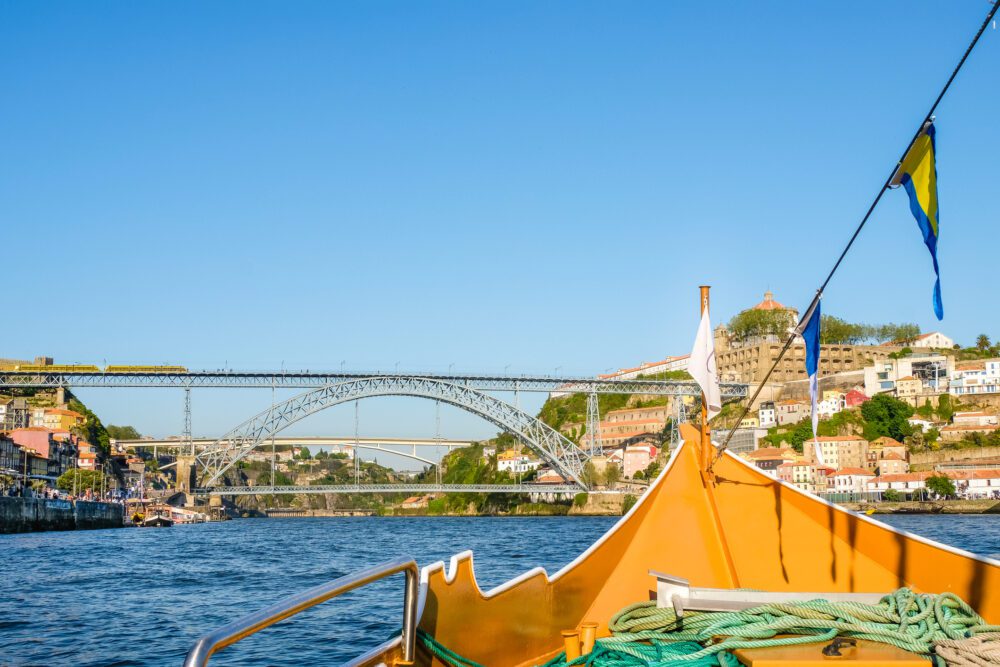
A Douro River cruise offers a captivating journey through the heart of Portugal’s picturesque Douro Valley, renowned for its stunning landscapes and rich cultural heritage. The Douro River, which stretches over 900 kilometres from Spain to the Atlantic Ocean, has played a vital role in the region’s history, serving as a vital trade route for centuries. Today, a river cruise along the Douro provides travellers with a unique opportunity to explore the valley’s terraced vineyards, charming villages, and historical landmarks. Many cruises depart from Porto, known as the gateway to the Douro Valley, offering passengers the chance to enjoy panoramic views of the city’s skyline before venturing into the scenic countryside.
Practical tips for enjoying a Douro River cruise include choosing a reputable cruise operator that offers comfortable accommodations, knowledgeable guides, and a variety of excursions to suit your interests. Whether you prefer a leisurely cruise aboard a traditional Rabelo boat or a more luxurious experience on a modern river cruise ship, there are options available to suit every traveller’s preferences. During the cruise, be sure to sample the region’s renowned wines, including Port wine, which is produced in vineyards along the Douro River. Additionally, take advantage of the opportunities to explore historic towns such as Peso da Régua and Pinhão, where you can immerse yourself in the local culture, visit charming wineries, and savour delicious Portuguese cuisine.
Porto Beaches
Porto is not only renowned for its charming old town and historic landmarks but also for its beautiful beaches along the Atlantic coastline. These beaches offer a refreshing escape from the city heat and are popular destinations for locals and tourists alike during the summer months. One of the most iconic beaches in Porto is Matosinhos Beach, known for its wide stretch of golden sand and excellent surfing conditions. Matosinhos has a long history as a fishing village, and today, it’s a bustling beach destination with a vibrant atmosphere. Visitors can enjoy sunbathing, swimming, or trying their hand at surfing, windsurfing, or kiteboarding. There are also plenty of beachfront bars and seafood restaurants where you can savour fresh seafood and enjoy stunning ocean views.
Another popular beach in Porto is Praia da Luz, located just a short drive from the city centre. Praia da Luz is known for its tranquil atmosphere and scenic surroundings, making it an ideal spot for a relaxing day by the sea. The beach is sheltered by cliffs, creating calm waters that are perfect for swimming and snorkelling. Visitors can rent sun loungers and umbrellas or take a leisurely stroll along the sandy shore. Nearby, you’ll find beachfront cafes and restaurants where you can indulge in delicious Portuguese cuisine while taking in the beautiful coastal scenery. Whether you’re seeking adventure or relaxation, Porto’s beaches offer something for everyone, making them a must-visit destination during your stay in the city.
Douro Valley Wine Tour
A Douro Valley wine tour offers a fascinating journey through one of the world’s oldest wine regions, renowned for its breathtaking landscapes and exceptional wines. The Douro Valley, a UNESCO World Heritage Site, is characterized by terraced vineyards that cascade down the hillsides along the Douro River. The region has a rich winemaking heritage dating back centuries, with wine production techniques passed down through generations. Visitors on a wine tour can explore traditional wineries, known as quintas, where they can learn about the winemaking process from grape to bottle. Many tours include guided tastings of the region’s famous Port wines, as well as its increasingly acclaimed table wines. Additionally, visitors can enjoy panoramic views of the Douro Valley’s stunning scenery, dotted with picturesque villages and historic estates.
Practical tips for a Douro Valley wine tour include booking in advance, especially during the peak tourist season, to secure your spot and ensure availability at the wineries you wish to visit. It’s also advisable to wear comfortable clothing and shoes suitable for walking, as some vineyards may involve traversing uneven terrain. Most wine tours depart from Porto, with options for full-day or half-day excursions. Some tours may include transportation from Porto to the Douro Valley, while others may require you to arrange your own transport.
Conclusion
Porto offers a rich tapestry of experiences that blend history, culture, and gastronomy, making it a captivating destination for travellers from around the world. From exploring the charming streets of the Old Town to savouring the flavours of Port wine in the Douro Valley, Porto offers something for every type of traveller. Its picturesque landscapes, historic landmarks, and warm hospitality create an unforgettable journey that leaves a lasting impression.
Whether you’re strolling along the Douro River, admiring the stunning views from the Dom Luís I Bridge, or indulging in the culinary delights of the local markets, Porto’s charm is bound to captivate you. With its unique blend of tradition and modernity, Porto invites visitors to immerse themselves in its vibrant culture and discover the many treasures that this enchanting city has to offer.
